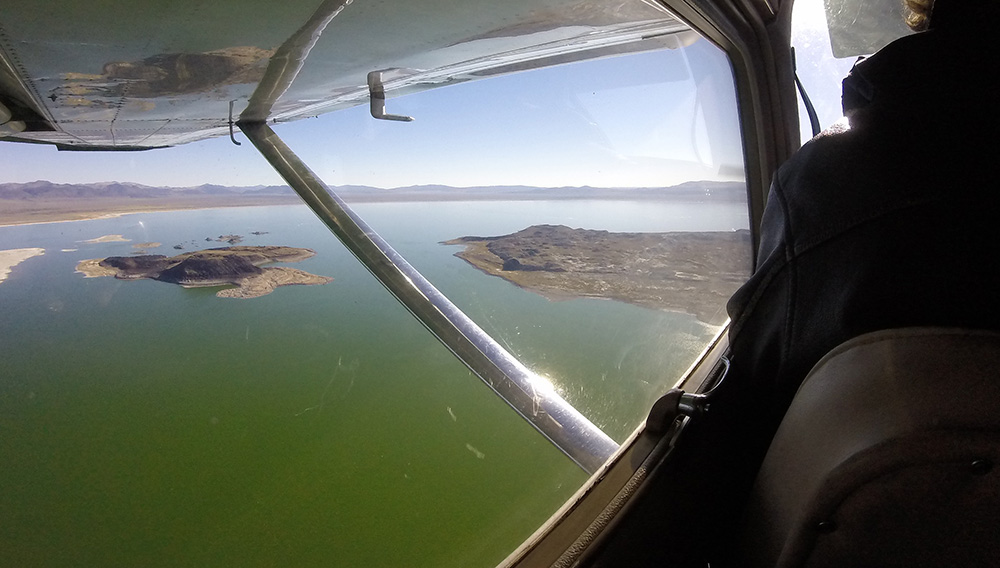
For the second summer in a row, Mono Lake remained impenetrably green through the summer season. The lake typically transforms into a blue, Lake Tahoe-like clarity as abundant Artemia monica (brine shrimp) graze microscopic algae from the upper water column. Satellite images from this summer continued to show a shrinking, and unyieldingly-green Mono Lake.

Artemia were present, but their numbers seemed to decline as the summer progressed. During the summer of 2014, the mean Artemia abundance was the fourth-lowest ever recorded since 1979, and the greatest decline in abundance (79%) took place from July to August—much earlier than typically seen in Mono Lake. It’s likely that a similar trend occurred in 2015; however data from this summer’s monitoring will not be available until May 2016. The Los Angeles Department of Water & Power (DWP) abruptly took over monitoring from the University of California Sierra Nevada Aquatic Research Lab in 2012. Since then, it has been difficult to get timely updates or scientific analysis on how or why the Mono Lake ecosystem might be changing.
In the fall of 2014, the Eared Grebe migration was affected by the low Artemia productivity. To stage at Mono Lake during their fall migration, Eared Grebes rely on a robust brine shrimp population, and fewer Eared Grebes remained on the lake through last fall. Their numbers typically build through mid-October, but the 2014 survey indicated that their numbers had dropped by over 50% by mid-October—down from approximately one million birds in mid-September. Numerous dead Eared Grebes were reported along the shoreline during fall 2014; anecdotally, a rare occurrence. The Eared Grebe survey is underway for 2015—another important year for data collection and analysis.
Pinning down the root cause of the change in Artemia population dynamics is tricky. Temperatures have been rising in the Mono Basin during winter and spring. During spring 2014, water temperatures in Mono Lake warmed between 1–2° Celsius compared to previous years. Concurrently, the lake has been dropping due to dramatically reduced freshwater input due to the drought. Less freshwater volume with increased salinity, temperatures, and a decline in wind events (fewer winter storms) may be altering lake stratification and influencing the ecosystem as well.
The Mono Lake Committee is, of course, concerned. We continue to support increased Eared Grebe monitoring, and we are working to make sure that the 2013 Mono Basin Stream Restoration Agreement is soon formalized by the State Water Board. Once that happens, Mono Lake limnological monitoring will be transferred from DWP back into the hands of independent researchers, and that will help in investigating the green lake mystery.
This post was also published as an article in the Fall 2015 Mono Lake Newsletter (page 4).
